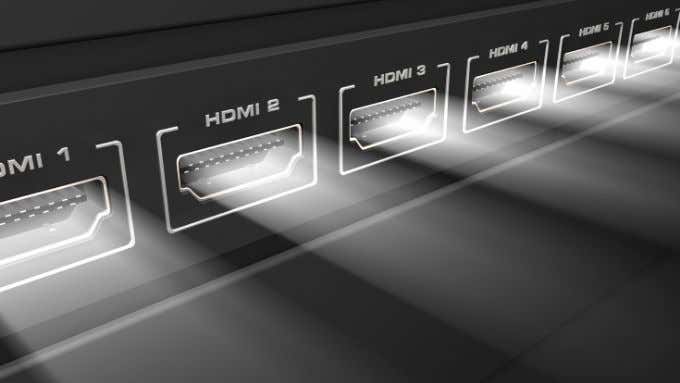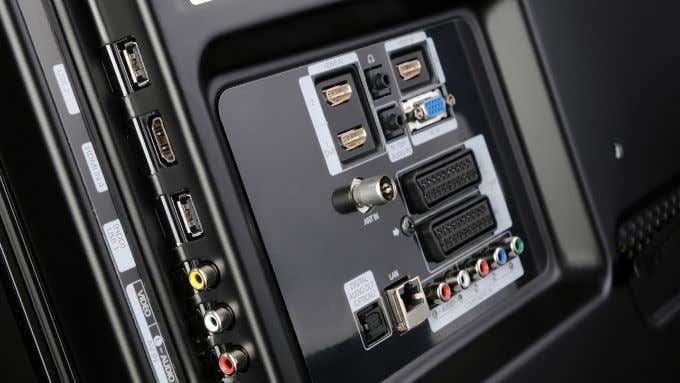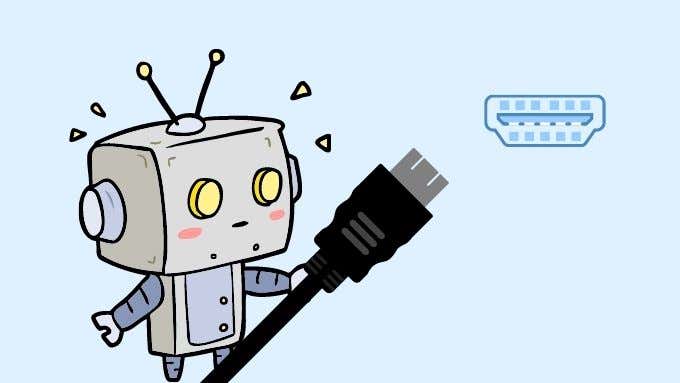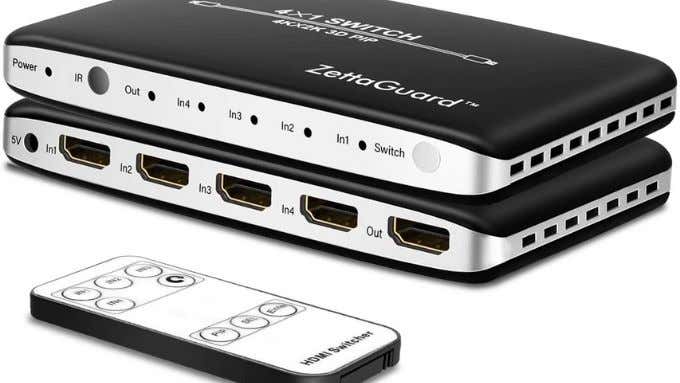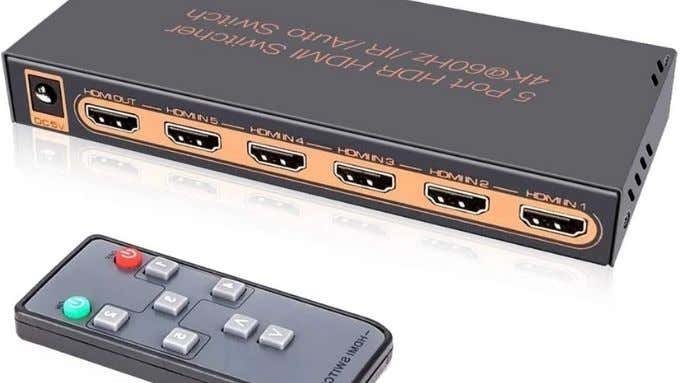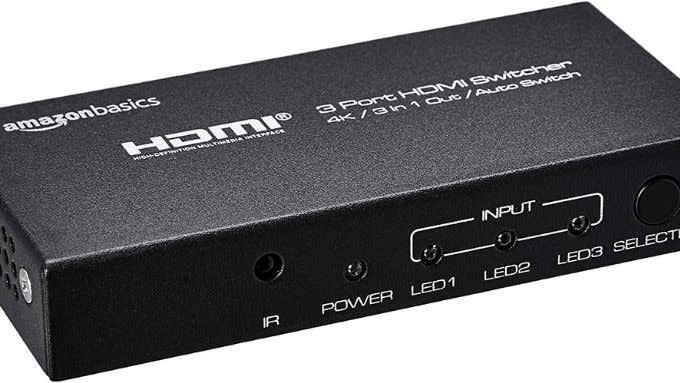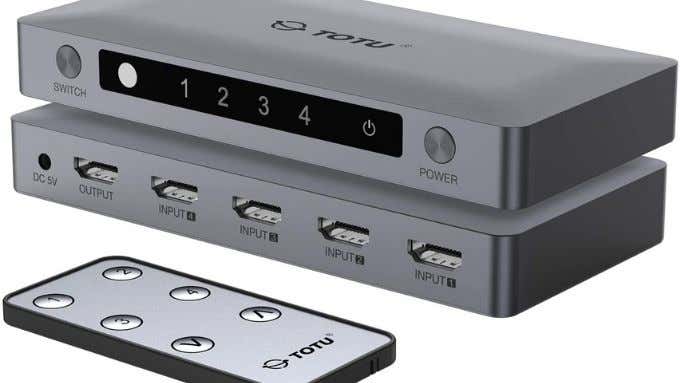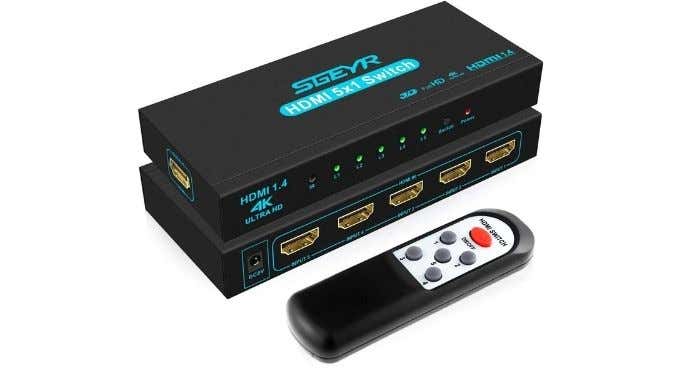Most mainstream TVs and monitors have multiple HDMI inputs, but sometimes it’s just not enough. An automatic HDMI switch might be just the ticket, but how do they work?
What is HDMI?
HDMI or High Definition Multimedia Interface is a standard for modern digital display devices. It’s the most widespread type of connection and you’ll find it on everything from laptops to game consoles. There are three connection sizes: standard, mini and micro. Mini and micro HDMI connectors are usually found on small devices such as action cameras, since their bodies are often too small for the chunky standard HDMI connector. HDMI cables carry digital information. They carry both sound and video, among other things. It’s also a two-way connection. Which means that both devices connected by an HDMI cable can speak to each other. That’s an important feature when it comes to automatic HDMI switches.
HDMI Switches in a Nutshell
HDMI switches solve the problem of having too few HDMI ports on your TV. On one side of the switch there’s a single HDMI output, which connects to the TV. On the other side of the Switch, you’ll find multiple inputs where devices like consoles or cable boxes can be connected. Operating the switch via its remote or physical controls changes which device’s signal is passed on to the display. Switches that feature automatic HDMI switching can detect which device is active and then will switch the output to that device automatically. If it’s implemented well, you’ll never have to manually switch between inputs. However, bad automatic switches can be more trouble than they’re worth. If they constantly get it wrong, it’s much less frustrating to simply use a remote or onboard control to change from one device to the other.
How Does Automatic Switching Work?
Because HDMI is a two-way street, it makes it possible for each device to actively indicate when it’s sending a signal. An automatic switcher detects which HDMI cable is currently active and switches to that one. It sounds simple in principle, but there needs to be a little but of logic to the process. After all, you don’t want the switch changing inputs when it shouldn’t. Generally automatic HDMI switching only works if just one device is currently powered on and sending a signal. If you want to switch between multiple devices that are all transmitting actively, you’ll have to do it manually using the remote or onboard control.
TVs With Automatic Switching
You might not need an automatic HDMI switch at all. Many recent TV models now include an automatic HDMI switching function built in. Even better, you can often turn this on or off in the options if you don’t like it. Higher-end TVs also include more than the typical three HDMI ports. Letting you hook up more devices without having to employ a switch. Also keep in mind that some devices offer an HDMI passthrough option. They have both an IN and OUT port. For example, Xbox One consoles feature such a passthrough as do some Blu-ray players. Chaining devices together like this is another way to save on the number of HDMI ports you need.
The Best Automatic HDMI Switches
With that basic explanation of how automatic HDMI switches work out of the way, we can look at some actual switches you can buy. Every person has different needs when it comes to these switches. So we’ve chosen examples for different use cases and budgets, to give you a good idea of the automatic HDMI switch options on offer.
Zettaguard 4K
The Zettaguard is a very affordable 4K switch that has fairly neutral styling and plenty of features. One design feature we immediately found attractive is the placement of all HDMI ports on the back of the unit. Making it easy to have a neat and unobtrusive setup. The Zettaguard supports a maximum UHD 60Hz signal, which covers just about everything. With the exception of PCs and next-generation console 120Hz modes. Then again, hardly anyone has a 4K 120Hz TV, so it’s not a major issue right now. Finally, it’s nice to see a picture-in-picture function. When you don’t want to switch automatically between sources, but want to watch more than one at once, it’s a cool option to have.
Awakelion 4K 5-Port Automatic Switch
Setting aside for a minute that the brand name of this switch is “Awake Lion” and that it’s styled to look like something from the NES era, it’s an amazing deal. A five-port switch with 4K 60Hz for under $50 is a steal in our view. The automatic switching function of this switch has a memory function, where it will go back to the last source you used when restarted. It does come with a ugly remote control if you want to take matters into your own hands, but for anyone on a budget who needs to connect five devices, it seems like a fine choice. That being said, this switch supports 4K output and automatic switching. We especially like that it uses USB power rather than a wall adapter. Most TVs, even non-smart models, have a USB port of some sort. So you should have the option of using that to power this switch. It’s cheap, it’s basic, and it will do the job!
Totu 4-port Switch
Sgeyr 5-Port Switch
This five-port switch from the (unpronounceable) Sgeyr looks quite a bit like a USB hub at first glance. Which means you’ll probably want to hide it away somewhere rather than display it openly as part of your entertainment setup. That is, unless you like that sort of thing. The main appeal of this switch is having five ports with auto-switching for only $30. However, the caveat is that this is an older HDMI 1.4 product. So 4K content is limited to 30Hz. That makes it a no-no for 4K gaming, but perfectly fine for 1080p output at higher refresh rates.
Switching it Up
While automatic HDMI switching isn’t the most revolutionary technology, it’s just one more small feature that can make your life easier. It all adds up to the convenience of modern life everyone should enjoy. Now if only we can figure out a way to get the remote control to fly over from where you forgot it. Maybe some sort of remote drone hybrid?

